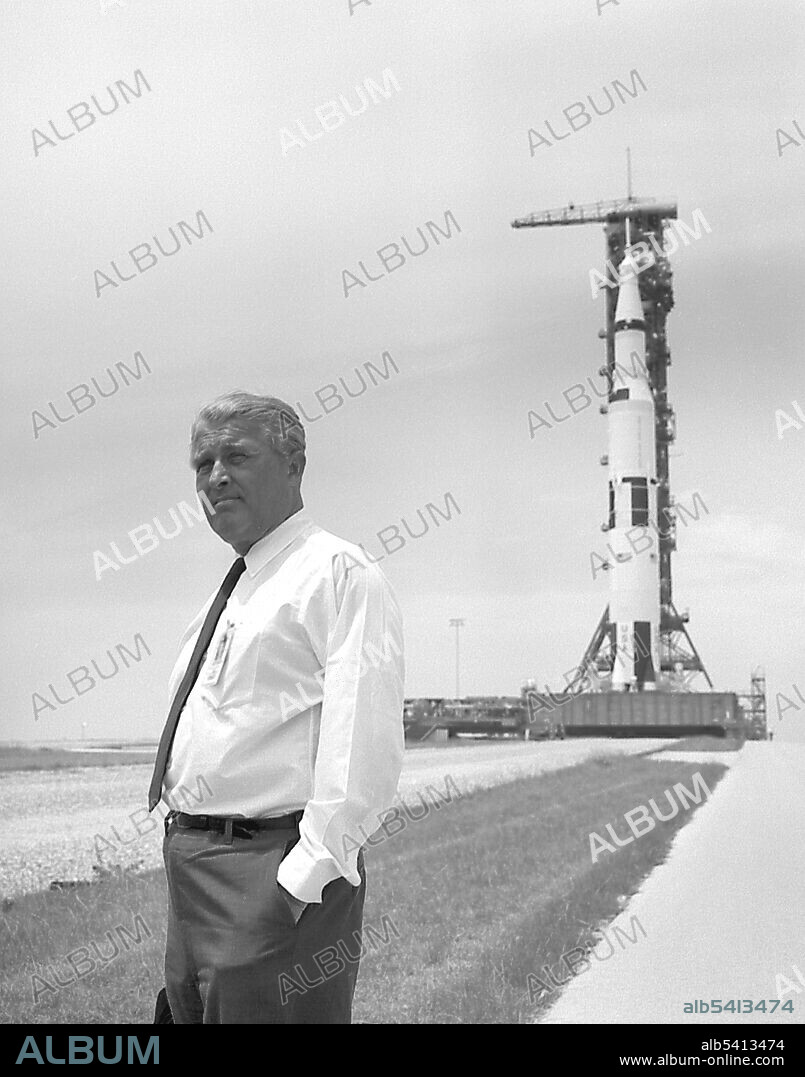alb5413474
Apollo 11, Wernher von Braun with Saturn V,1969

|
Zu einem anderen Lightbox hinzufügen |
|
Zu einem anderen Lightbox hinzufügen |



Haben Sie bereits ein Konto? Anmelden
Sie haben kein Konto? Registrieren
Dieses Bild kaufen

Titel:
Apollo 11, Wernher von Braun with Saturn V,1969
Untertitel:
Siehe automatische Übersetzung
Wernher von Braun pauses in front of the Saturn V vehicle being readied for the historic Apollo 11 lunar landing mission. Wernher Magnus Maximilian Freiherr von Braun (March 23, 1912 - June 16, 1977) was a German-American rocket scientist, aerospace engineer, space architect, and one of the leading figures in the development of rocket technology in Nazi Germany during WWII and, subsequently, in the United States. He was the central figure in Germany's rocket development program, responsible for the design and realization of the V-2 combat rocket during WWII. After the war, he and select members of his rocket team were taken to the United States as part of the then-secret Operation Paperclip. Von Braun worked on the United States Army intermediate range ballistic missile (IRBM) program before his group was assimilated by NASA. Under NASA, he served as director of the newly formed Marshall Space Flight Center and as the chief architect of the Saturn V launch vehicle, the super-booster that propelled the Apollo spacecraft to the Moon. His crowning achievement was to lead the development of the Saturn V booster rocket that helped land the first men on the Moon in July 1969. In 1975 he received the National Medal of Science. He died of pancreatic cancer in 1977 at the age of 65.
Bildnachweis:
Album / NASA/Science Source
Freigaben (Releases):
Model: Nein - Eigentum: Nein
Rechtefragen?
Rechtefragen?
Bildgröße:
3303 x 4200 px | 39.7 MB
Druckgröße:
28.0 x 35.6 cm | 11.0 x 14.0 in (300 dpi)
Schlüsselwörter:
 Pinterest
Pinterest Twitter
Twitter Facebook
Facebook Link kopieren
Link kopieren Email
Email
